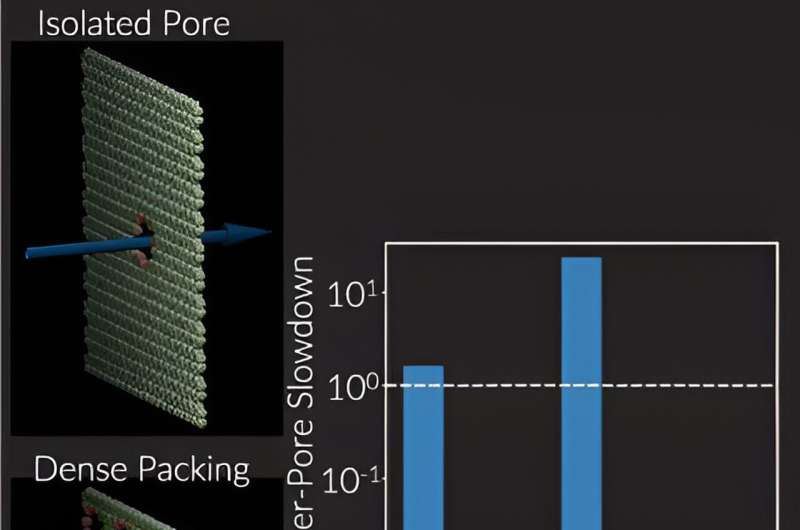This article has been reviewed according to Science X's editorial process and policies. Editors have highlighted the following attributes while ensuring the content's credibility:
fact-checked
peer-reviewed publication
trusted source
proofread
Very small pores make a big difference in filtering technology

Nanoporous membranes have been shown to be valuable tools for filtering out impurities from water and numerous other applications. However, there's still much work to be done in perfecting their designs. Recently, the lab of Prof. Amir Haji-Akbari has demonstrated that exactly where the nanosized holes are placed on the membrane can make a big difference. The results are published in ACS Nano.
In recent years, nanoporous membranes made from graphene, polymers, silicon and other materials have been used successfully for separating gas, desalinating water, virus filtration, power generation, gas storage, and drug delivery. However, creating membranes that let all the right molecules pass through while keeping the undesired ones out has proven tricky.
For desalinating water, for instance, it's crucial that the membrane has a high permeability for water while sufficiently blocking small ionic and molecular solutes, and other impurities. But researchers have found that enhancing the permeability of a membrane often compromises its selectivity, and vice versa.
One promising approach is to optimize the chemistry and geometry of isolated nanopores to achieve the desired permeability and selectivity, and place as many of those pores as possible within a nanoporous membrane. Exactly how neighboring pores affect each other, though, is unclear.
At the nanoscale, molecules interacting with pore walls can exhibit behaviors that defy conventional theories. The Haji-Akbari lab explored whether they could design innovative membrane systems with increased precision and efficiency by fine-tuning the nanopores.
With computer simulations, Haji-Akbari's research team found that nanoscale proximity between pores can detrimentally affect water permeability and salt rejection. Specifically, they created simulations of membranes with varying patterns of pore placement, including a hexagonal lattice and a honeycomb lattice. What they found was that the hexagonal pattern, which allowed for more distance between pores, had a greater permeability/selectivity performance than the membrane with the honeycomb pattern.
These effects deviate from established theories, Haji-Akbari said.
"This assumption that the pore resistance is independent of the proximity of the pore is not correct," said Haji-Akbari, assistant professor of chemical & environmental engineering. "Clearly, it depends on proximity."
Their findings shed insight on how these effects accelerate the movements of certain ions through membranes while causing other ions to decelerate. Further, it can inform better designs of nanoporous membranes for enhanced separation processes such as water desalination and other applications.
More information: Brian A. Shoemaker et al, Correlations in Charged Multipore Systems: Implications for Enhancing Selectivity and Permeability in Nanoporous Membranes, ACS Nano (2024). DOI: 10.1021/acsnano.3c07489
Journal information: ACS Nano
Provided by Yale University



















